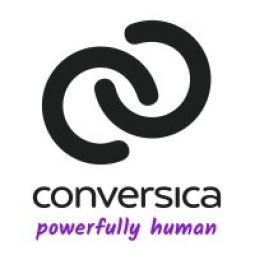Technology Category
- Infrastructure as a Service (IaaS) - Virtual Private Cloud
- Networks & Connectivity - Gateways
Applicable Functions
- Procurement
- Sales & Marketing
Use Cases
- Inventory Management
- Leasing Finance Automation
Services
- System Integration
About The Customer
Hootsuite is a Vancouver-based company that offers a comprehensive suite of social media management and analytics tools. The organization prides itself on customer care, social commerce, and employee advocacy. Hootsuite’s ability to scale social media posting and foster customer relationships makes it a popular solution for businesses. The company was undergoing significant changes in Marketing and Sales, with a new Commercial Sales team handling inbound leads. The team was 100% inbound leads driven, meaning everything came from their Marketing leads. Hootsuite hosts 40 webinars a quarter, has millions of contacts in their email database, and hundreds of thousands of self-service plan setups every month.
The Challenge
Hootsuite, a leading social media management and analytics platform, was grappling with an excessive volume of leads. The popularity of their platform resulted in a high influx of leads, which posed a challenge for the team to effectively follow up. This led to missed opportunities, wasted time on unqualified leads, and frustration among team members. The company was also undergoing significant changes in Marketing and Sales, with a new Commercial Sales team handling inbound leads. Despite launching a lead scoring model, the conversion of leads was not at an optimal level. The team identified that the most converting leads were coming from their website and were labeled ‘demo request’. However, they needed to go beyond website-generated leads and demo requests to accelerate sales-ready leads from other sources such as webinars, email database, and self-service plan setups. The challenge was to find a scalable way to discover opportunities within these lead sources.
The Solution
Hootsuite turned to Conversica AI Assistants for Conversational Marketing and Sales to tackle the challenge of high lead volume. The AI Assistants offered unlimited scalability in an affordable manner and integrated seamlessly with Hootsuite's technology stack including Salesforce and Marketo. The AI Assistants also worked well with Hootsuite's process of routing leads after identifying hot leads. Hootsuite integrated LeanData into the lead routing process to ensure seamless routing of leads once flagged by Conversica as ready to talk to Sales. The company employed three AI Assistants, Alexis Horseman, Elena Williams, and Maria Jimenez, to handle Conversational Marketing and Sales. These AI Assistants helped filter all content leads as a first step in the customer journey, boosting engagement rates significantly. Hootsuite also implemented Conversica Answers, a customizable conversation management tool, to handle common questions asked by leads and contacts, thereby motivating them to continue the customer journey.
Operational Impact
Quantitative Benefit

Case Study missing?
Start adding your own!
Register with your work email and create a new case study profile for your business.
Related Case Studies.

Case Study
Hospital Inventory Management
The hospital supply chain team is responsible for ensuring that the right medical supplies are readily available to clinicians when and where needed, and to do so in the most efficient manner possible. However, many of the systems and processes in use at the cancer center for supply chain management were not best suited to support these goals. Barcoding technology, a commonly used method for inventory management of medical supplies, is labor intensive, time consuming, does not provide real-time visibility into inventory levels and can be prone to error. Consequently, the lack of accurate and real-time visibility into inventory levels across multiple supply rooms in multiple hospital facilities creates additional inefficiency in the system causing over-ordering, hoarding, and wasted supplies. Other sources of waste and cost were also identified as candidates for improvement. Existing systems and processes did not provide adequate security for high-cost inventory within the hospital, which was another driver of cost. A lack of visibility into expiration dates for supplies resulted in supplies being wasted due to past expiry dates. Storage of supplies was also a key consideration given the location of the cancer center’s facilities in a dense urban setting, where space is always at a premium. In order to address the challenges outlined above, the hospital sought a solution that would provide real-time inventory information with high levels of accuracy, reduce the level of manual effort required and enable data driven decision making to ensure that the right supplies were readily available to clinicians in the right location at the right time.

Case Study
Hardware Retailer Uses Data Warehouse to Track Inventory
Ace tracked which products retailers ordered, when they were ordered and shipped. However, the company could not track or forecast actual sales. Data used for reporting was up to a one-week old, owing to performance and data cleansing issues. Requirement to integrate wholesale and inventory data with POS data to help drive key business decisions, improve category management, lower inventory costs and optimize pricing. Reliance on custom coding to integrate POS data was excessively resource intensive and led to major performance constraints.

Case Study
Remake Enterprise-to-production System
The client was running a legacy material flow tracking system and wanted to replace the system with a more effective one as the system was increasingly expensive to maintain and support and also was not extendable. The client's IT landscape was filled with modern applications and it was difficult to interface the material flow tracking system with modern applications.

Case Study
Expertech - Capital Tool Inventory
Costly tools used to splice fiber optic cables are an important part of Expertech’s operational and capitalized expenses, but the company did not have an automated system in place to track their tools and optimize their usage. The existing data in its tracking system was inaccurate and required manual updating, making it essential for the company to implement an efficient process to track and follow up on its capital tool inventory.









